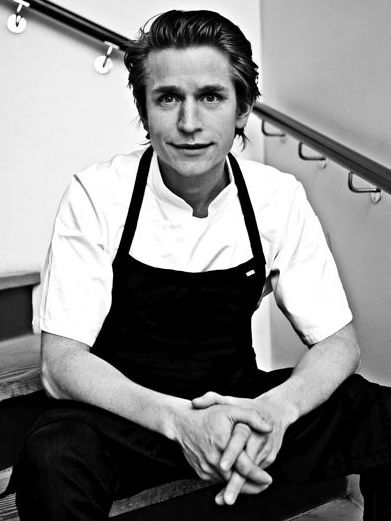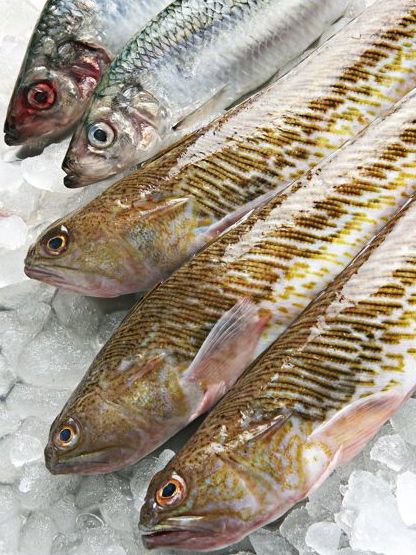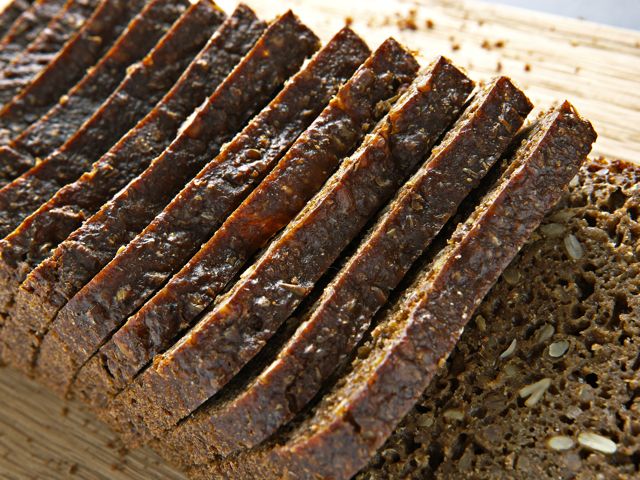
aamann, l
(article, Naomi O'Leary)
[%pageBreakSettings nobreak=true] In September 2004, a group of Danish chefs hung up their aprons and gathered around a meeting table in Copenhagen for an 18-hour brainstorming session. Their aim was ambitious: to create an indigenous Scandinavian cuisine to rival that of Italy or France. What emerged was the New Nordic Cuisine Manifesto, a 10-point program that has become a foundational text not just for Danish chefs but for foodies worldwide. In short, the manifesto was an agreement that cooking should be based on local, seasonal ingredients that were sustainably and ethically produced. [[block(sidebar). h1.Featured recipes]] Seven years after the manifesto was signed, Copenhagen has become a fine-dining destination. Gourmets flock from around the world to eat at Noma, which has won Restaurant magazine’s top prize for two years in a row. The city is also home to chef Rasmus Kofoed, the winner of the 2011 Bocuse d'Or, a cooking competition known as the culinary Olympics. Yet from its inception, the Nordic food revolution was never about pretentious or complicated dining. Rather, it focused on returning to Danish food’s traditional, simple roots and local ingredients. “We never wished the new Nordic kitchen to be an elitist movement,” Claus Meyer, Noma’s co-founder and organizer of the 2004 conference, has declared on his website. “It should be open, democratic, and accessible to everyone. We wanted the values from the manifesto to exist in our everyday lives and in our hearts.” h3. Digging out ancestral knowledge in the Danish countryside After 2004, Danish chefs began rejecting foreign food imports — even such staples as garlic and olive oil — and instead began driving out into the countryside to forage for native ingredients, keeping open minds about what could end up in their restaurant dishes. [%image feature-image float=right width=400 caption="Pickled herring, a traditional smørrebrød topping."] Chef Lars Williams is in charge of the Nordic Food Lab, which tests ingredients to find their most interesting flavors and potential recipes. Among the lab’s discoveries have been the delicious combination of seaweed and cheese; a refreshing tea that can be made from birch wood; and countless long-forgotten herbs and berries. “Historically, this is what people did,” says Williams. “They made use of the food that they saw growing around them. But unlike in Spain and Italy, all that knowledge has been lost here in Denmark, forgotten about through the centuries. The Nordic food movement is trying to recover the cuisine we had historically.” The potential of sea buckthorn, an orange berry not usually eaten, was discovered in this way. Trevor Moran, a sous-chef at Noma, often starts his days at 5 a.m., when he travels out to forage for ingredients. “We found sea buckthorn growing near some hip roses, a beach variety of rose,” he recalls. “The idea is that if you find two things growing near each other, they’ll probably work well together in a dish, as their chemical makeup will be similar. We pickled the rose petals in apple vinegar for about a year. Then we combined them with the juice of the sea-buckthorn berry, and the result was just incredible.” The dish is now being served daily at Noma. The influence of the Nordic food revolution has reached beyond restaurants and into people’s homes, inspiring a DIY revolution. Since Noma began serving home-brewed beer made from the sap of native birch trees, online sales of equipment for harvesting birch sap have skyrocketed. Who’s buying? Ordinary Danes with birch trees in their back gardens. And the search for lost ingredients is going online. An iPhone application is in development that will allow enthusiasts to photograph and map plants they find growing in the wilderness, and suggest appropriate recipes. h3. Smørrebrød: A classic staple revived The revival of the region’s traditional native cuisine is perhaps best exemplified by the return of the old Danish tradition of smørrebrød. The word simply means "buttered bread," but as any Dane will tell you, smørrebrød is much more than just open-face sandwiches. The rye bread is considered the canvas, and the topping a dish in itself. [[block(sidebar). h1. Classic smørrebrød toppings # Roast pork, walnuts, onions, and a small touch of red-currant preserve # Sweet, strong mustard sauce or horseradish with gravlax (traditional Nordic dill-cured salmon) # Roast beef, pickles, and horseradish sauce # Pickled herring year-round; small hand-peeled shrimp in summer # Fried fish, such as plaice, with pickles and mayonnaise # Cold roast beef, smoked sausage, or chicken mixed with combinations of potatoes, onion, tomato, and eggs ]] Typically, smørrebrød toppings feature pickled fish, roasted sausages, hand-peeled shrimp, vegetables, and potatoes in endless variations. For hundreds of years, it has been Copenhagen tradition for families to eat a lunch of smørrebrød in the city’s colorful Tivoli Gardens. During the 20th century, Copenhagen restaurants offered a rich and vast selection of different smørrebrøds; the record was Oskar Davidsen’s restaurant, which in 1933 offered 178 different kinds of smørrebrød. Yet in recent decades, the proud tradition of smørrebrød was fading away. It had become synonymous with unhealthy fast-food culture, not considered fit material for chefs or home cooks. This was the sorry condition in which deli owner Adam Aamann found it. “The tradition had become excessively fatty and meaty, different kinds of meats stacked on top of each other,” he told me. “They were using few quality products, and vegetables, no herbs, too little fish, too little craftsmanship and too many pre-prepared ingredients.” In 2006, Aamann was inspired to open a small takeout joint offering modern interpretations of the classic open-face sandwiches. For the foodies of Copenhagen, it was a revelation. Top chefs began adapting smørrebrød to their gourmet menus, and the dish has become a staple at Noma. Fancy restaurants aside, the Danish dish remains true to its humble roots as a dish of the people. And though the fermentation process for making the bread is lengthy, it’s easy enough to make at home. Once you’ve mastered the rye bread base, you can let your imagination loose on what dishes to create on top. That's what the Nordic food revolution is truly about: taking traditional dishes and reimagining them as something both for professionals and for home cooks. In just a few years, Denmark has gone from culinary backwater to dining destination, and the ancient culinary habits of Scandinavia have been brought back from the brink. In the States, we've seen this before, beginning in the 1960s with Euell Gibbons and his popularizing of foraging and continuing through the 1970s with Alice Waters and her dedication to local and seasonal ingredients. In recent years, we've been riding a wave of interest in all edible things DIY and sustainable. Will the wave crest and recede? Or will our rediscovered traditions continue to lap around our kitchen tables? p(bio). Naomi O’Leary, an Irish journalist, has written about food, travel, and the arts from all around Europe. Follow her on Twitter at @naomi_oleary.

aamann, l

fishonice, l

reference-image, l

feature-image, l